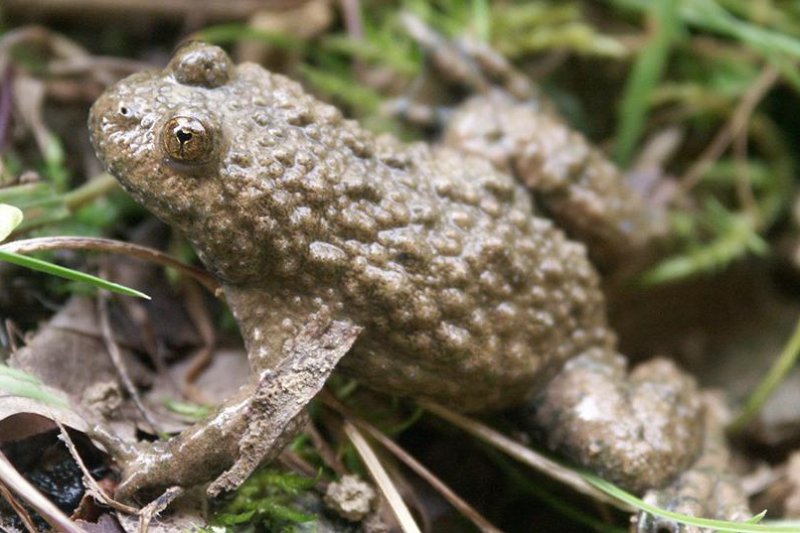The yellow-bellied toad is one the amphibian species being pushed out of local Central European ecosystems by invasive water frogs. Photo by Christopher Buehler/UNIBAS
BASEL, Switzerland, Feb. 29 (UPI) -- In recent decades, invasive water frogs have spread rapidly throughout Central Europe.
A new mathematical model developed by researchers at the University of Basel offers new insight to their dominance and the plight of local amphibian species like the yellow-bellied toad and common midwife toad.
Scientists plugged local ecological observations from 1,000 bodies of water in northern Switzerland into a statistical model to draw larger conclusions about the impact of invasive water frogs.
"Based on our analysis we estimate that the populations of both species would be up to five times bigger without the water frogs' presence," Basel researcher Christoph Buhler said in a press release.
Researchers and conservation officials are now interpreting the data to decide when and where intervention is necessary for the protection of vulnerable species from the invasive marsh frog.
Complicating conservation efforts is the fact that the Euroasian marsh frog has interbred with some local species, leading to hybridized frogs that behave like an invasive species but sometimes look like a native species.
It's also difficult to distinguish the negative impacts of climate change, man-made degradation and invasive species.
"What is clear, however, is that the changes in the landscape currently favor water frogs," explained environmental scientist Valentin Amrhein.
"Small waters that dry out quickly and are being avoided by water frogs but sought after from other species have become rare these days," Amrhein added. "The spread of invasive species is often supported, consciously or unconsciously, by the actions of humans and cannot easily be undone."
The new findings are detailed in the journal The American Naturalist.















